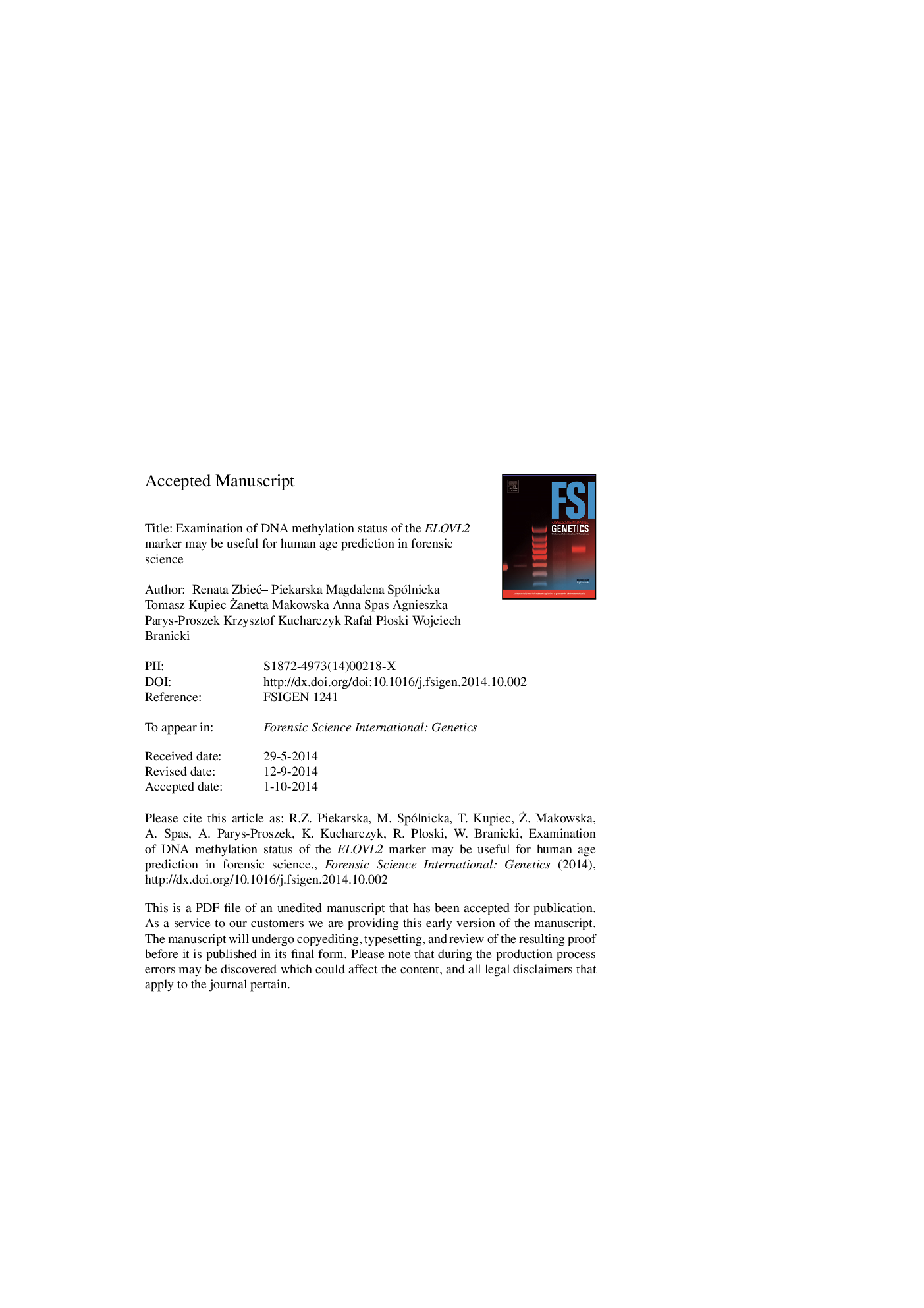| Article ID | Journal | Published Year | Pages | File Type |
|---|---|---|---|---|
| 6553889 | Forensic Science International: Genetics | 2015 | 25 Pages |
Abstract
Age estimation in forensic investigations may complement the prediction of externally visible characteristics and the inference of biogeographical ancestry, thus allowing a better description of an unknown individual. Multiple CpG sites that show linear correlation between age and degree of DNA methylation have been identified in the human genome, providing a selection of candidates for age prediction. In this study, we optimized an assay based on bisulfite conversion and pyrosequencing of 7 CpG sites located in the ELOVL2 gene. Examination of 303 blood samples collected from individuals aged 2-75 years allowed selection of the most informative site, explaining 83% of variation in age. The final linear regression model included two CpG sites in ELOVL2 and enabled age prediction with R2 = 0.859, prediction error = 6.85 and mean absolute deviation MAD = 5.03. Examination of a testing set of 124 blood samples (MAD = 5.75) showed that 68.5% of samples were correctly predicted, assuming that chronological and predicted ages matched ±7 years. It was found that the ELOVL2 methylation status in bloodstains had not changed significantly after 4 weeks of storage in room temperature conditions. Analysis of 45 bloodstains deposited on tissue paper after 5, 10 and 15 years of storage in room conditions indicated that although a gradual decrease of positive PCR results was observed, the general age prediction success rate remained similar and equaled 60-78%. The obtained results show that the ELOVL2 locus provides a very good source of information about human chronological age based on analysis of blood, including bloodstains, and it may constitute a powerful and reliable predictor in future forensic age estimation models.
Related Topics
Life Sciences
Biochemistry, Genetics and Molecular Biology
Genetics
Authors
Renata ZbieÄ-Piekarska, Magdalena Spólnicka, Tomasz Kupiec, Å»anetta Makowska, Anna Spas, Agnieszka Parys-Proszek, Krzysztof Kucharczyk, RafaÅ PÅoski, Wojciech Branicki,
